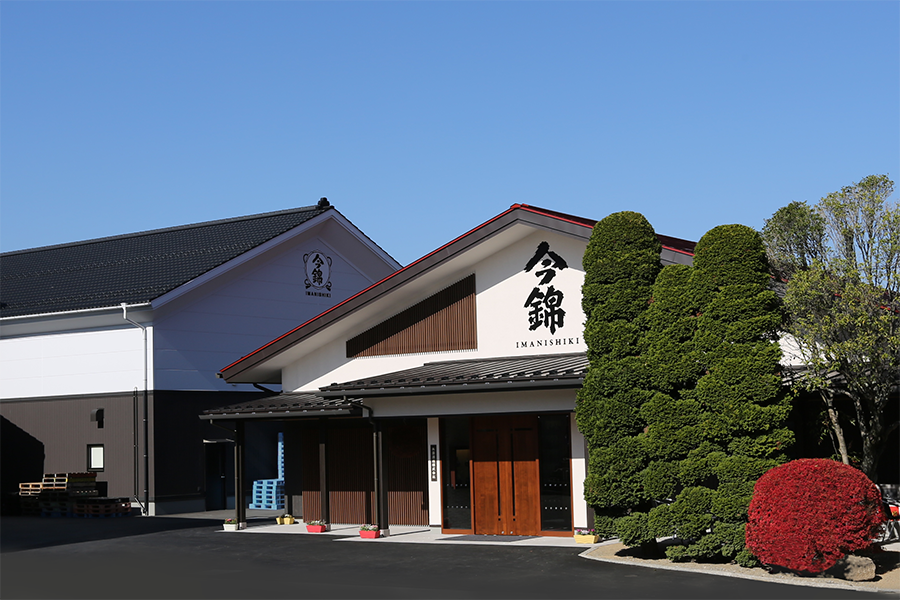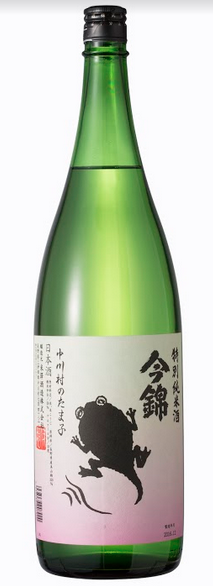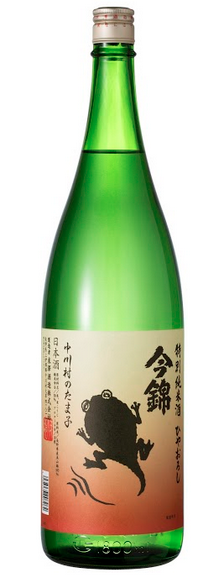
Sake review – Imanishiki brand, Yonezawa Sake Brewery
History
Founded in 1907 by Yasotaro Yonezawa in Nakagawa Village, Nagano Prefecture. The name of the Yonezawa Sake Brewery’s main brand, Imanishiki, comes from the sumo-name used by the founder. He was the prominent sumo-wrestler of the local region.
Unfortunately due to the decline of the sake industry since it’s peak in the mid 1970s, the brewery found itself in trouble but was given a helping hand in 2014 when it became a Kantenpapa group company of Ina Food Industry Ltd, Japan’s largest agar manufacturer. Yonezawa Sake Brewery was able to revitalize the brewery, rebuild it’s worn and aged facilities while keeping it’s brewing traditions.
Characteristics of the sake
Since the establishment of the brewery over 114 years ago, all of their sake is made using the sakabune-shibori pressing method. The traditional method of sake pressing; after the fermenation step is complete, the sake mash is filled into sake bags which are laid inside the sakebune (a kind of box). Pressure is then gently applied from above in this pressing method that is mainly used in only high grade types of sake. This particularly labor-intensive and time-consuming method leads to a softer, smoother, sake.
When tasting their sake, you can tell that the brewery utilises the clean pure water it has been blessed with from being located directly between the Central and Southern Alps of Japan. Most of their sake is made using locally grown Miyama Nishiki sake rice while also utilizing a few rare sake rices such as Kinmon Nishiki to make some of their sake. As a brewery in general, their sake can characterised as being rich with umami while striking the ideal balance of umami and acidity.
Sake which I tasted through online tasting session
Imanishiki Junmai Daiginjo

Type of sake: Junmai Daiginjo
Alcohol content: 16%
Sake rice: Miyama Nishiki
Characteristic of the sake
This has quite a soft dignified ginjo aroma. Makes you reminise of just-ripe white grapes and peaches. Truly a marvellous Junmai Daiginjo. In 2020 it received multiple awards both domestically and overseas.
Recommended food to pair with: Sukiyaki
Imanishiki Junmai Ginjo Miyamanishiki

Type of sake:Junmai Ginjo
Alcohol content: 16%
Sake rice: Miyama Nishiki
Characteristic of the sake
Has a fresh ginjo aroma that spreads throughout your mouth and makes you think of citrus fruits. The sake has a typical junmai ginjo umami body with a balanced acidity. Not only is the rice and water used from Nagano Prefecture, but the yeast was also made in Nagano, making it an all-Nagano sake. It earned the trophey in it’s category at Sake Selection 2018 (Belgium).
Recommended food to pair with: Sharp or mild cheeses, goats cheese even.
Imanishiki Junmai Ginjo Kinmonnishiki

Type of sake: Junmai Ginjo
Alcohol content: 16%
Sake rice: Kinmon Nishiki
Characteristic of the sake
This is a rather particular sake that uses a Kinmon Nishiki sake rice which is only really used by sake breweries in Nagano Prefecture. A very fruity and aromatic sake. To enjoy the aroma even more I would suggest serving it in a wine glass. Is a soft medium-bodied sake.
Recommended food to pair with: pate or foie gras
Imanishiki Tokubetsu Junmaishu

Type of sake: Tokubetsu Junmai
Alcohol content: 16%
Sake rice: Miyama Nishiki
Characteristic of the sake
This is a great all-round sake for both heavy and light sake drinkers so can enjoyed by everyone at the same table. It has a gentle aroma and is nice and light in taste.
Imanishiki Nakagawamura no Tamako Namagenshu

Type of sake: Tokubetsu Junmai
Alcohol content: 18%
Sake rice: Miyama Nishiki
Characteristic of the sake:
The first sake of the Nakagawamura no Tamako series. This sake is made entirely with Miyama Nishiki sake rice grown locally in Nakagawa Village.
Has a elegant aroma with light hints of melon. Out of the series this one is the most umami-rich with a nice mellow body and acidity to round out the sake. Most of the sake range of Imanishiki has an alcohol content is 16%, however this 18% alcohol namagenshu (unpasteurized, undiluted sake) would be particularly popular with stronger drinkers.
Recommended food to pair with: Nabe or hot pot
Imanishiki Nakagawamura no Tamako Tokubetsu Junmai

Type of sake: Tokubetsu Junmai
Alcohol content: 16%
Sake rice: Miyama Nishiki
Characteristic of the sake:
This sake is the spring-themed sake with the pink label matching Japan’s iconic cherry blossoms. This sake is made entirely with Miyama Nishiki sake rice grown locally in Nakagawa Village. It starts out with a gentle muscat grape aroma which over time settles down to more of a aroma that makes you think of honey. Despite having a sweet aroma, the taste itself isn’t sweet, rather it is rich with a fine balance of acidity and umami.
For those of you that enjoy hot sake, this tastes fantastic not just chilled, but also at nuru-kan (40°C).
Recommended food to pair with: Given the harmony between the acidity and umami of this sake, it goes well with a large variety of food.
Imanishiki Nakagawamura no Tamako Namazake

Type of sake: Tokubetsu Junmai
Alcohol content: 16%
Sake rice: Miyama Nishiki
Characteristic of the sake:
Brewed and bottled in the winter, it is then stored well below freezing until the summer. A truly refreshing sake that is easy to drink and accompanied with a rather juicy acidity. It is a unpasteurized sake, giving it a particularly brighter and fresh taste but has to be stored chilled in the refrigerator.
Imanishiki Nakagawamura no Tamako Hiyaoroshi

Type of sake: Tokubetsu Junmai
Alcohol content: 16%
Sake rice: Miyama Nishiki
Characteristic of the sakeThis is the Autumn-themed sake of the Nakagawamura no Tamako line-up made up entirely of Miyama Nishiki sake rice from Nakagawa Village. Aged throughout the summer, it has achieved a mellow and smooth taste with a medium body. For the adventurous sake drinker, this sake also tastes great heated at nuru-kan (40°C).
Imanishiki Umeshu

Type of sake: Liqueur
Alcohol content: 12%
Ume Plum: Ryukyo Koume
Characteristic of the sake
A very particular umeshu made with sake and ryukyo koume, a small ume plum indigenous to southern Nagano where the brewery is located. These small plums gives the taste of this umeshu a certain tang leading to a fine balance of acidity and sweetness. The stem of each individual ume plum is removed which gives this umeshu a rather rich taste. Due to this, it can be enjoyed either on the rocks or mixed with sparkling water. As an umeshu it is held in extremely high regard having receiving gold medals in both 2019 and 2020 in European competitions.
Recommended food to pair with: sharp or mild cheeses, oily foods
——
Detail:
Yonezawa Sake Brewery Website:
Shop link:
Location map on sakegeek:
Google map:
Others
Yonezawa sake brewery map on Sakegeek:
Other articles written by Nigel on Sakegeek: Charm of sake http://sakegeek.com/the-charm-of-sake-by-nigel-hay/




